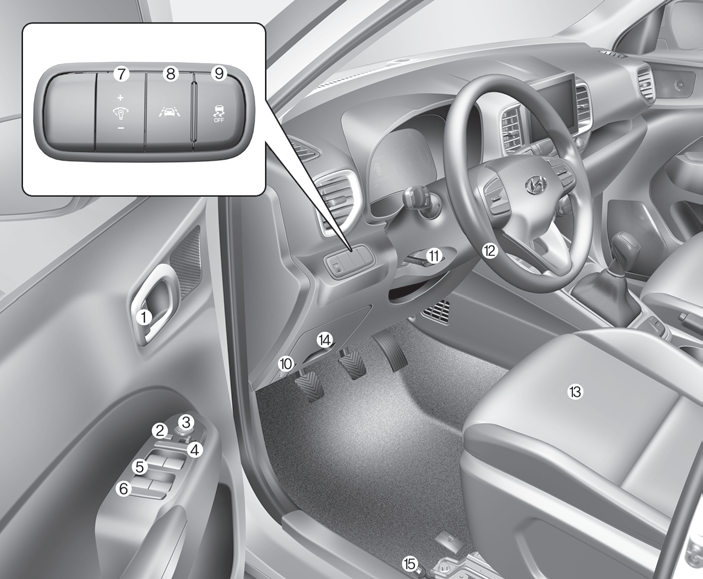Hyundai Venue: Charging System / Battery Sensor. Description and operation
Hyundai Venue (QX) (2020-2025) Service Manual / Engine Electrical System / Charging System / Battery Sensor. Description and operation
| Description |
Vehicles have many control units that use more electricity. These units control
their own system based on information from diverse sensors. It is important
to have a stable power supply as there diverse sensors giving a variety of information.
Battery sensor (A) is mounted on battery (-) terminal. It transmits battery
voltage, current, temperature information to ECM. ECM controls generating voltage
by duty cycle based on these signals.
 Battery Sensor. Repair procedures
Battery Sensor. Repair procedures
Removal
1.
Disconnect the battery negative (-) cable.
2.
Disconnect the battery sensor connector (A)...
Other information:
Hyundai Venue (QX) (2020-2025) Service Manual: Rear Door Latch. Repair procedures
Replacement • When removing with a flat-tip screwdriver or remover,wrap protective tape around the tools to preventdamage to components...
Hyundai Venue (QX) (2020-2025) Owners Manual: Normal Maintenance Schedule
I : Inspect and if necessary, adjust, correct, clean or replace. R : Replace or change. *1 : The drive belt should be replaced when cracks occur or tension is reduced excessively. *2 : If TOP TIER Detergent Gasoline is not available, one bottle of additive is recommended...
Categories
- Manuals Home
- 1st Generation Venue Owners Manual
- 1st Generation Venue Service Manual
- Warning and Indicator Lights
- System Setting and Activation
- Lighting control
- New on site
- Most important about car
Interior Overview

1. Door lock/unlock button
2. Outside rearview mirror control switch
3. Central door lock switch
4. Power window switches
5. Power window lock switch
Copyright © 2025 www.hvenueqx.com

